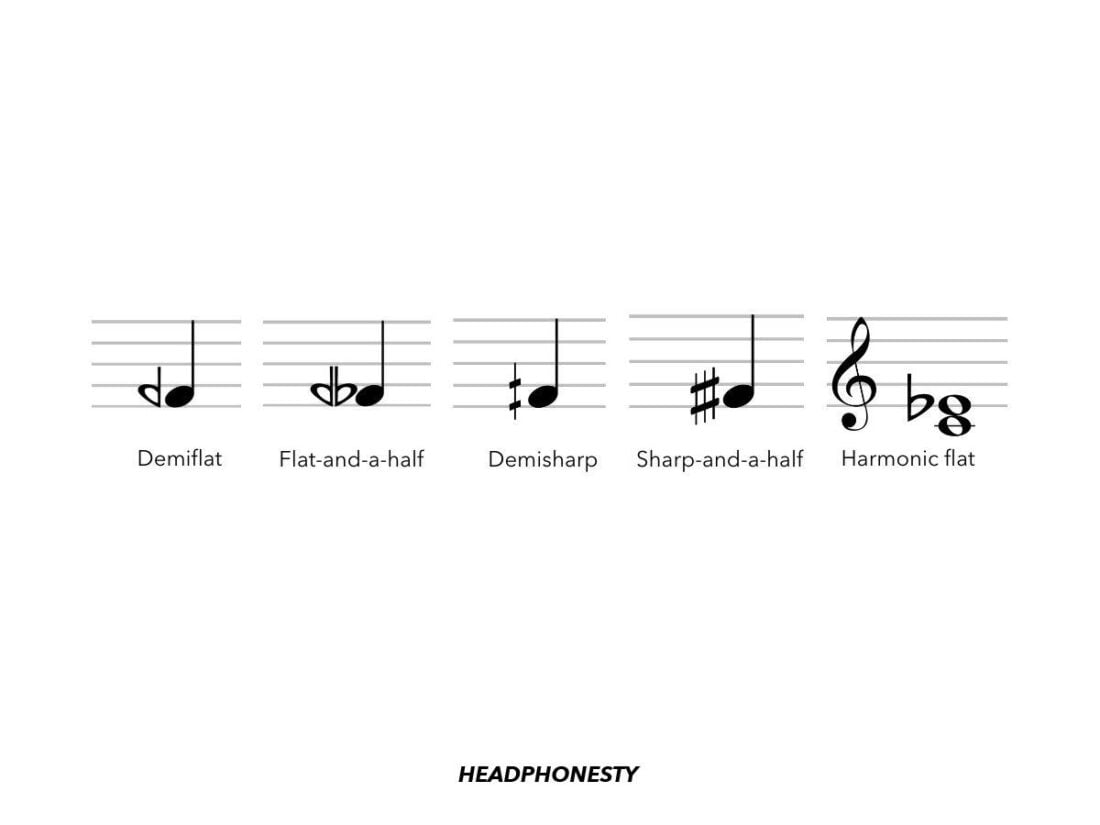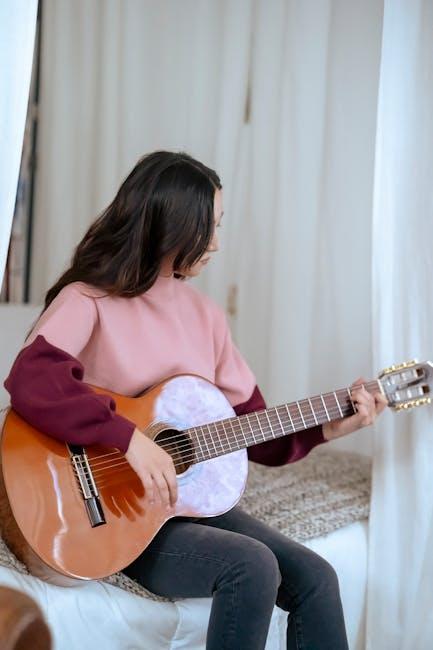Are you tired of strumming along to the same old boring chords on your rhythm guitar? Do you feel like your playing lacks that certain spark that makes music truly come alive? Well, fear not, because the answer to your musical woes is here! Introducing Slash Notation – the secret weapon of rhythm guitarists everywhere. Say goodbye to mundane strumming patterns and hello to a world of dynamic, pulsating rhythms that will have your audience moving and grooving in no time. So grab your guitar and get ready to unleash the power of Slash Notation like never before! Understanding Slash Notation: The Key to Rhythmic Precision”>
Understanding Slash Notation: The Key to Rhythmic Precision”>
Contents
- 1 Understanding Slash Notation: The Key to Rhythmic Precision
- 2 Diving Into the Basics of Slash Notation for Rhythm Guitar
- 3 Exploring the Role of Accents and Dynamics in Slash Notation
- 4 Mastering Strumming Patterns Through Effective Use of Slash Notation
- 5 Incorporating Percussive Elements with Slash Notation for Enhanced Groove
- 6 Expanding Your Musical Vocabulary with Advanced Slash Notation Techniques
- 7 Adapting Slash Notation Across Various Musical Genres for Rhythm Guitar
- 8 FAQs
- 9 Rock on with Slash Notation!
Understanding Slash Notation: The Key to Rhythmic Precision
Ever struggled to keep up with the rhythm during jam sessions or band practices? Understanding slash notation might just be the key to unlocking that elusive rhythmic precision! Here’s a crash course on how to decipher those cryptic symbols and play along like a pro.
First things first, let’s break down what slash notation actually looks like. It’s essentially a shorthand way of notating rhythms, especially in more informal settings like rock or pop music. Instead of writing out every single note, you’ll see a series of slashes (/) and dashes (-) to indicate beats and strumming patterns.
When interpreting slash notation, remember that each slash represents a beat or strum. For example, if you see / / / /, that means you’re playing four beats in a measure. If you see / – / –, that indicates a rhythm where you play on the downbeat and skip the upbeat.
Practice makes perfect when it comes to mastering slash notation. Start with simple patterns and gradually work your way up to more complex rhythms. Before you know it, you’ll be grooving along with the best of them, impressing your bandmates and audience alike!

Diving Into the Basics of Slash Notation for Rhythm Guitar
So you’ve decided to dive headfirst into the world of slash notation for rhythm guitar. Welcome to the wild ride of strumming and plucking your way to musical glory!
First things first, let’s talk about what exactly slash notation is. It’s like a secret code that tells you which chords to play and when to play them. And who doesn’t love a good secret code, am I right?
Now, onto the fun stuff – decoding those cryptic symbols! The basic formula is pretty simple: a chord name followed by a slash (/) and then another letter or symbol indicating a specific way to play that chord. For example, Am/C would mean to play an A minor chord with a C note in the bass. It’s like musical Twister – hands on red, feet on green, and strum that chord like your life depends on it!
But wait, there’s more! Sometimes you’ll see numbers thrown into the mix, like D7/F#. Don’t be intimidated – that just means to play a D7 chord with an F# note in the bass. It’s like musical math, but with way cooler results.
 Accents and Dynamics in Slash Notation”>
Accents and Dynamics in Slash Notation”>
Exploring the Role of Accents and Dynamics in Slash Notation
When it comes to slash notation, accents and dynamics play a crucial role in adding flavor and excitement to the music. Accents can be described as the musical equivalent of bolding certain words in a text, while dynamics serve as the volume control for each note.
Let’s start with accents. In music notation, accents are indicated by symbols such as “>” or “^” placed above a note. Think of accents as the divas of the musical world – they demand attention and want to stand out from the rest of the notes. Whether it’s a sharp staccato accent or a smooth legato accent, these symbols help to emphasize certain notes in a melody.
Now, onto dynamics. Dynamics are represented by symbols such as “piano” (soft) or “forte” (loud) placed above the staff. Dynamics are like the volume knob on your stereo – they control the intensity and emotion of the music. From a gentle pianissimo melody to a thunderous fortissimo crescendo, dynamics help to create a dynamic range in the music.
So, next time you’re working with slash notation, don’t forget to sprinkle in some accents and play around with dynamics. Experiment with different combinations to see how they can enhance the overall sound and bring your music to life!
 Strumming Patterns Through Effective Use of Slash Notation”>
Strumming Patterns Through Effective Use of Slash Notation”>
Mastering Strumming Patterns Through Effective Use of Slash Notation
So you wanna be a strumming master, huh? Well, let me tell you, it’s all about mastering those slash notations like a pro. Once you understand how to read and interpret those little lines and slashes, you’ll be strumming away like a true rockstar.
First things first, let’s talk about the basics of slash notation. Slash notation is a shorthand way of representing different strumming patterns. Each slash represents a downstroke, while each space represents an upstroke. Simple, right? With a little practice, you’ll be able to look at a string of slashes and spaces and know exactly how to strum those chords.
But here’s the kicker – you can get creative with slash notation. You can mix and match different patterns, create your own unique strumming style, and really make those chords sing. Don’t be afraid to experiment and see what works best for you.
So go ahead, grab that guitar, and start practicing those slash notations. Before you know it, you’ll be strumming circles around the competition and wowing audiences with your impeccable sense of rhythm. Rock on, strumming master!
Incorporating Percussive Elements with Slash Notation for Enhanced Groove
If you want to take your groove to the next level, consider incorporating percussive elements into your compositions. By using slash notation, you can spice up your rhythm and add some extra flair to your music.
One way to enhance your groove is by adding percussive elements like claps, snaps, or stomps. These sounds can help create a more dynamic and engaging rhythm, making your music stand out from the crowd. Plus, who doesn’t love a good hand clap in the middle of a song?
Another fun way to use percussive elements is by incorporating drum fills into your compositions. By using slash notation, you can easily indicate when a drum fill should be played, adding excitement and energy to your music. Just imagine the look on your drummer’s face when they see those slashes – they’ll know it’s time to bring the thunder!
So next time you’re working on a new song, don’t be afraid to experiment with percussive elements and slash notation. Who knows, you might just stumble upon a killer groove that takes your music to the next level!
Expanding Your Musical Vocabulary with Advanced Slash Notation Techniques
So you think you know everything there is to know about slash notation, huh? Think again, my friend! There are advanced techniques out there just waiting for you to discover and add to your musical vocabulary. Let’s dive right in!
First up, we have the slash chord inversion. This fancy little trick involves moving the bass note of the chord to a different position, creating a whole new sound. It’s like taking your favorite sandwich and adding a secret ingredient that no one can quite put their finger on. Your ears will thank you for trying out this nifty technique!
Next, let’s talk about slash substitutions. This is where you can get really creative and start swapping out chords in your progressions for ones you never even knew existed. It’s like playing a game of musical Tetris, trying to fit in pieces that don’t quite seem to belong, but somehow make the whole thing sound even better. Give it a whirl and see where it takes you!
And finally, we have the slash rhythm variation. For those times when you’re feeling a little adventurous and want to shake things up a bit, try playing around with the rhythm of your slashes. Experiment with different placements and lengths of slashes to create a whole new groove that will have your audience tapping their feet in no time. Who knew punctuation could be so much fun?
Adapting Slash Notation Across Various Musical Genres for Rhythm Guitar
So, you want to spice up your rhythm guitar playing by incorporating some slash notation into your repertoire? Well, you’ve come to the right place! Whether you’re playing metal, pop, or even funk, the versatile slash notation can add a whole new dimension to your sound. Here are a few tips on how to adapt slash notation across various musical genres:
- In metal music, slash notation can be used to create those heavy, chugging rhythms that make your head bang involuntarily. Try emphasizing the downbeats with power chords or palm-muted single notes to really drive the point home. Don’t be afraid to experiment with different rhythm patterns to keep things interesting.
- Pop music is all about catchy melodies and infectious grooves, so why not use slash notation to create some interesting chord progressions? Try strumming simple open chords or arpeggiating triads to add some sparkle to your playing. Remember, simplicity is key in the pop world!
And let’s not forget about funk music – the genre that’s all about that rhythm! Slash notation can help you create those funky, syncopated rhythms that keep audiences grooving all night long. Try incorporating muted strums, staccato chords, and quick embellishments to really get that funky feel. Remember, the pocket is your best friend in funk!
So there you have it – with a little creativity and a lot of practice, you can adapt slash notation across a wide range of musical genres to take your rhythm guitar playing to the next level. So get out there, experiment, and most importantly, have fun with it!
FAQs
What is Slash Notation and how is it different from standard notation?
Slash Notation is a shorthand way of notating rhythms in music, using slashes and numbers instead of traditional notes and rests. It’s like music notation’s rebellious cousin who likes to break all the rules and rock out.
How can mastering Slash Notation help improve my rhythm guitar playing?
Think of Slash Notation as a secret code that unlocks the power of rhythm guitar playing. When you can quickly read and interpret these shorthand rhythms, you’ll become a lean, mean, strumming machine on the guitar.
Are there any tips or tricks for getting better at reading Slash Notation?
Practice, practice, practice! Just like learning any new language, the more you immerse yourself in Slash Notation, the easier it will become to understand. And don’t forget to air guitar along to your favorite songs for some extra practice – it’s scientifically proven to improve your skills.
What famous guitarists use Slash Notation in their music?
Slash Notation has been used by legendary guitarists like Jimmy Page, Angus Young, and of course, the man himself – Slash. These rock gods have all wielded the power of Slash Notation to create iconic guitar riffs that have stood the test of time.
Can Slash Notation be used in other styles of music besides rock?
Absolutely! From country to jazz to pop, Slash Notation can be applied to any genre of music to help musicians communicate rhythms more efficiently. So go ahead and sprinkle some Slash Notation into your next jam session – your bandmates will thank you.
Rock on with Slash Notation!
Now that you’ve unlocked the secrets of Slash Notation, get ready to take your rhythm guitar skills to the next level. With this powerful tool in your arsenal, you’ll be shredding like a rockstar in no time. So grab your guitar, crank up the volume, and let the magic of Slash Notation guide your fingers to glory. Keep practicing, keep rocking, and remember – the power of Slash compels you!



